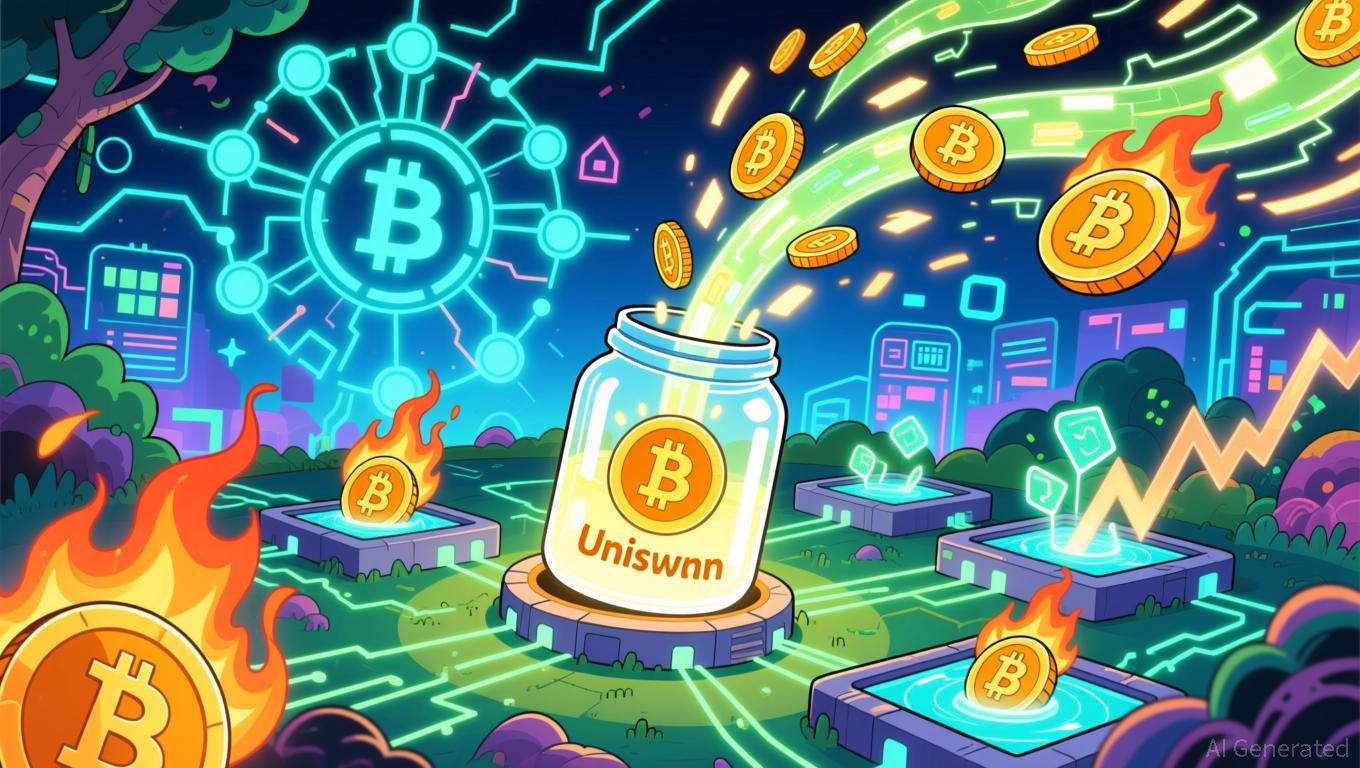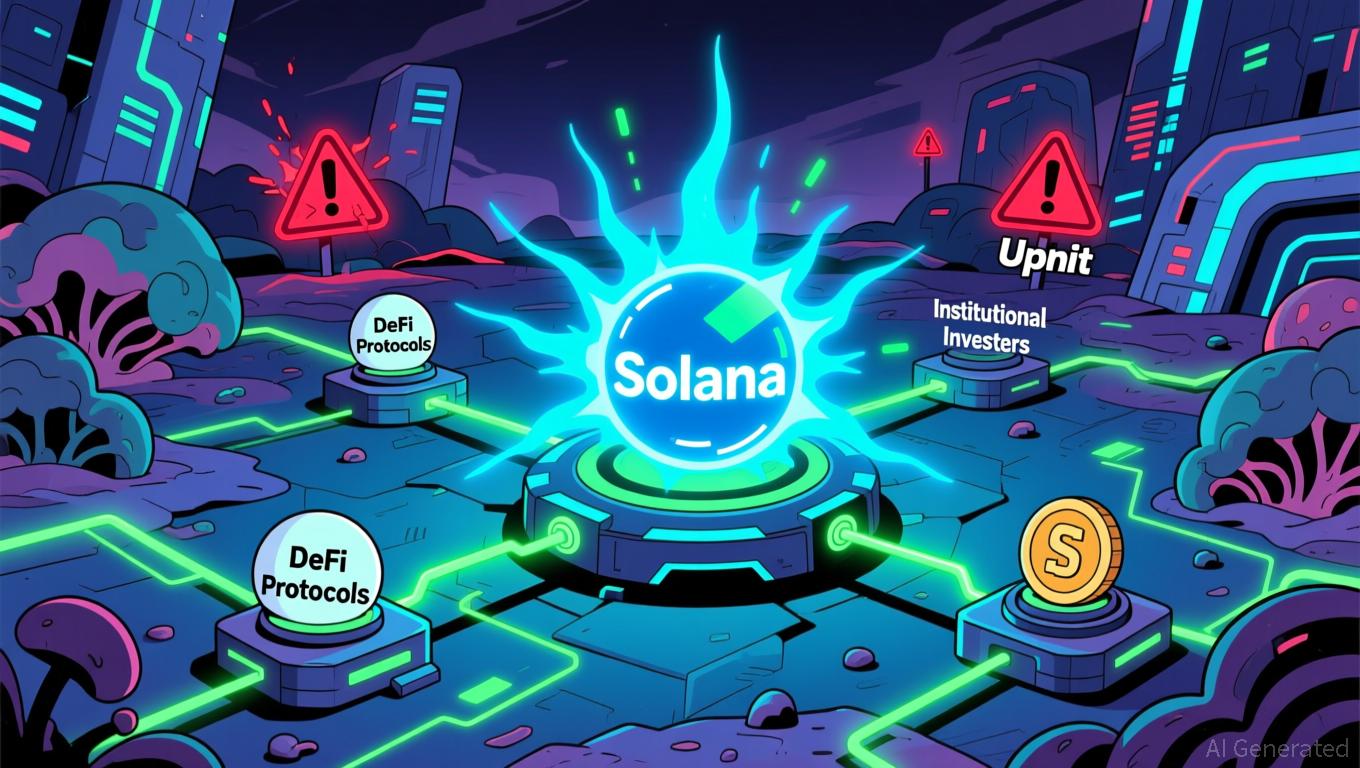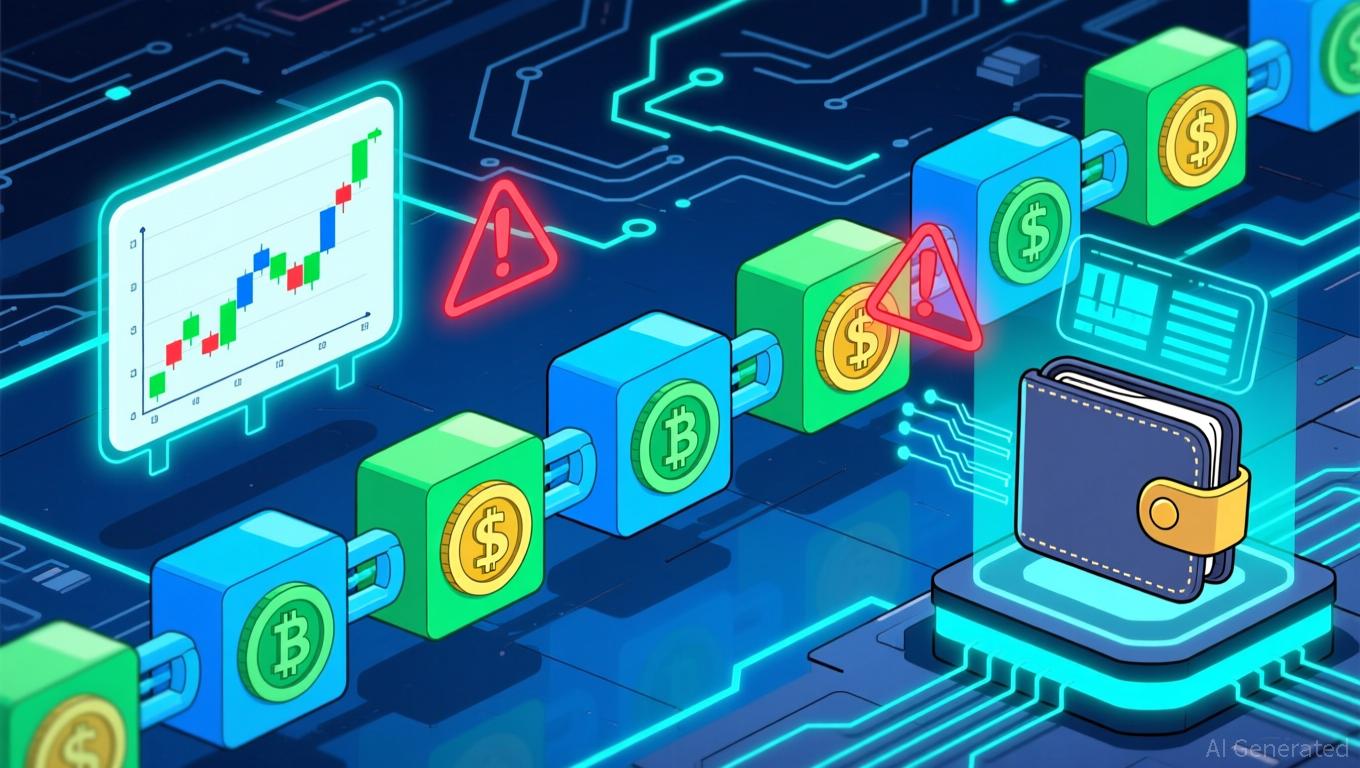Uniswap News Today: Addressing DeFi's Value Gap: Uniswap's Debated Fee Restructuring
- Uniswap's UNIfication proposal redirects trading fees to a "token jar," enabling UNI holders to burn tokens for assets, aiming to align protocol growth with token value. - The plan includes a 100M UNI retroactive burn (16% of supply) and Layer-2 integration to sustain supply reduction, addressing DeFi's historic disconnect between usage and token valuation. - Critics warn liquidity providers may lose earnings, while a UK whale's $10M short positions highlight market skepticism despite community debates o
Uniswap’s UNIfication Proposal: A New Era for DeFi Tokenomics
Uniswap has introduced the UNIfication proposal, a plan designed to directly connect the protocol’s trading fees with UNI token buybacks. This initiative has received strong early backing, suggesting a major transformation in the landscape of decentralized finance (DeFi) token economics. Although UNI’s market capitalization has dropped to $6.8 billion from its previous high of $21.7 billion, Uniswap’s monthly trading volume soared to $116.6 billion in 2025—almost three times higher than in 2023. This contrast between the protocol’s growth and the token’s declining value has fueled discussions about potential misalignments in DeFi governance. Supporters believe the proposal could address these issues by tying trading activity more closely to token demand.
The core of the UNIfication proposal is a fee switch mechanism that diverts a share of Uniswap v2 and v3 trading fees into a dedicated “token jar.” UNI holders would have the option to burn their tokens in exchange for assets from this jar, effectively reducing the token’s circulating supply and potentially increasing its value. Additionally, the proposal suggests a one-time burn of 100 million UNI tokens—representing 16% of the current supply—to compensate for fees missed during periods when the fee switch was inactive. By integrating revenue from Layer-2 solutions, this approach aims to create a sustainable model for reducing supply and rewarding long-term holders. However, some critics caution that liquidity providers (LPs) might see their earnings decrease as a result of the redirected fees.
Reactions from the market have been varied. A notable investor, known by the address 0xa31, has taken advantage of UNI’s price swings by shorting the token along with meme coins such as ASTER and MON. As of November 26, this investor had realized $6.23 million in profits from short positions, with an additional $4 million in unrealized gains. This activity reflects ongoing skepticism about UNI’s short-term prospects, even as the community debates the proposal’s long-term impact. Meanwhile, the UK’s fiscal policies have drawn comparisons to Uniswap’s strategy, particularly Chancellor Rachel Reeves’ budget proposal to increase international student fees in order to fund grants for domestic students—a move seen as another example of value redistribution.

Industry experts have largely welcomed the proposal’s potential to reshape DeFi economics. Crypto analyst Simon Dedic observed that the combination of the fee switch and retroactive token burns could prompt other DeFi projects to focus more on increasing token value, which may help restore investor confidence. He emphasized the importance of Uniswap’s initiative, suggesting it could bridge the longstanding gap between protocol performance and token valuation. Nonetheless, the proposal faces challenges. Its reliance on token burns differs from alternative models like veLocks, which reward long-term engagement through enhanced voting power. There are also concerns about the potential impact on liquidity providers and the possibility that less reputable pools could lose trading volume after the changes take effect.
As the DeFi sector considers the implications of the UNIfication proposal, its adoption could set a new standard for aligning token incentives with protocol success. By tackling structural inefficiencies and introducing features such as Protocol Fee Discount Auctions (PFDA) to capture MEV internally, Uniswap is positioning itself to remain competitive in the increasingly crowded decentralized exchange (DEX) market. The results of this initiative are likely to shape broader trends in the industry, especially as established financial players like Coinbase roll out their own ambitious DeFi offerings.
Disclaimer: The content of this article solely reflects the author's opinion and does not represent the platform in any capacity. This article is not intended to serve as a reference for making investment decisions.
You may also like
Privacy Altcoins Surge While Crypto Markets Decline
In Brief Cryptocurrency markets faced a major downturn in recent weeks. Privacy altcoins like Zcash rise amidst stricter regulation concerns. Upcoming regulations pose liquidity risks for privacy-focused cryptocurrencies.

Solana News Today: Institutions Remain Confident in Solana Amid Security Concerns and Volatile Prices
- Solana's on-chain trading volume now exceeds centralized exchanges, driven by $510M in ETF inflows and institutional adoption of DeFi protocols. - Price volatility and security breaches, including Upbit's $36.8M Solana-based theft, highlight risks despite $3B+ in corporate treasury holdings. - Institutional capital continues to flow into Solana's ecosystem, with DWF Labs committing $75M to scalable DeFi infrastructure amid TVL recovery to $120B. - Forward Industries reports $668M unrealized losses as Sol

XRP News Today: XRP ETFs See Rapid Growth, Price Remains Flat—Will Increased Inflows Overcome Technical Barriers?
- XRP ETFs saw $164M inflows on Nov. 24, 2025, with Grayscale and Franklin Templeton launching new products amid rising institutional interest. - Price rebounded to $2.20 but remains range-bound below key technical levels, forming descending patterns despite ETF-driven liquidity gains. - Ripple's RLUSD stablecoin surged 56% in 30-day volume to $3.5B, now third-largest GENIUS Act-compliant stablecoin after USDC and PYUSD. - Analysts predict $5.05 by 2025 and $26.50 by 2030, but XRP's 16.95% drop from 30-day

SEC Considers Blockchain Stock Advancements as Concerns Over Conventional Market Stability Persist
- SEC plans to discuss tokenized stock regulations with major firms like Coinbase and BlackRock , aiming to modernize securities rules for blockchain-based finance. - Proposed "innovation exemption" seeks to fast-track crypto products but risks destabilizing traditional markets by creating valuation gaps and eroding investor protections. - WFE warns tokenized shares could disrupt market structure, while Nasdaq proposes unified order books with shared CUSIP identifiers to align with existing systems. - Regu
